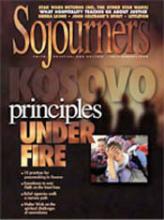The U.S. has spent nearly $70 billion on missile defense since President Reagans 1983 Star Wars proposal. Deployment of nationwide missile defenses would be a serious obstacle to nuclear disarmament by the United States and by all governments that possess nuclear weapons. And it is doubtful whether a projected U.S. nationwide defense system would be effective.
Despite all this, the Senate and House of Representatives voted by large majorities this spring to deploy a "thin" nationwide system of defenses against limited ballistic missile attack, intended at the outset to be able to destroy 12 to 20 attacking warheads. The president is expected to sign this legislation, which represents a statement of intention to deploy a nationwide missile defense system.
There has been much controversy over the feasibility and potential consequences of missile defense, a system of ground-based (for now) rockets designed to attack and destroy incoming ballistic missiles traveling at tremendous speed and aimed at any part of the country. The purpose of the system now under discussion is to defend against a limited long-range biological or nuclear attack by "rogue" countries.
Construction of a nationwide missile defense system would violate the terms of the 1972 U.S.-Soviet Anti-Ballistic Missile treaty. The ABM treaty forbids nationwide missile defense, use of space- or sea-based sensors, and use of more than one site for defense. It is anticipated that the planned system would violate all these restrictions. Consequently, the ABM treaty would have to be amended or annulled to permit deployment of the proposed U.S. system.
Russia has already criticized the U.S. action as undermining the treaty. China too has criticized the new legislation. In a related development, China has disputed possible U.S. action to provide theater missile defenses to Taiwan, Japan, and South Korea as "hostile."
Read the Full Article
